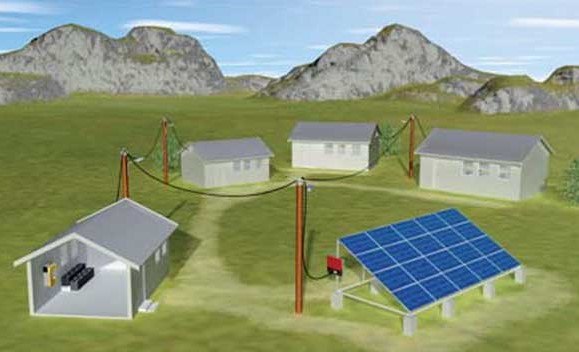A new study by Rocky Mountain Institute (RMI) shows how rural mini-grids can rapidly scale across sub-Saharan Africa by addressing key barriers and cost reduction pathways to reduce costs over 60 percent by 2020.

More than 600 million people, 65 percent of sub-Saharan Africa, lack electricity access. Hundreds of millions more have only an unreliable and intermittent supply at best.
The traditional path of bringing power to these unserved millions is to expand the electricity grid, build new fossil-fuel-based power plants and run transmission and distribution lines to far-flung villages, farms and homes. That model works in the developed world, where strong government agencies and locally organised cooperatives have driven electrification.
Yet the approach has not been as effective in sub-Saharan Africa and other developing regions for several reasons, including: high infrastructure costs, low ability of end-users to pay, disproportionately small end-use demand in villages and unreliable and intermittent electricity supplied via grid extension.
In the face of these challenges, alternative approaches like mini-grids are being considered to provide energy access to remote communities. Mini-grids – small-scale distribution networks with local generation based primarily on solar PV power and backed up by batteries or gensets for reliable 24/7 power – can provide significant levels of power in isolated, rural locations.
“There’s a transformative effect that comes with larger, more reliable amounts of electricity – whether it’s grinding millet or cassava, washing coffee beans, running welding equipment or driving irrigation pumps. These are essential appliances for real economic growth in rural Africa, and the kind of development so many African governments and citizens are seeking,” said Kelly Carlin, manager at RMI.
However, while successful examples exist, mini-grids have yet to scale across the continent. Addressing and overcoming barriers is critical for mini-grids to deliver benefits for the populations that need them most. The barriers to scaling rural mini-grids in Africa include high cost, an underutilisation of their generation capacity, expensive or unavailable financing and regulatory and policy barriers.
RMI identified a pathway to address these barriers and reduce mini-grid costs by 60 percent. Following this pathway would rapidly accelerate market growth for mini-grids by cutting the levelised cost of electricity of minigrid-produced power from between $0.60 per kWh and $1.00 per kWh today, to $0.25 per kWh by 2020, making it cheaper than alternatives like diesel gensets, and in many places, traditional grid extension.
Steps along the cost-reduction pathway
- Reduce costs of mini-grid hardware. Leverage the ongoing fall in renewable energy costs by bulk purchasing components and streamlining procurement. Develop standardised, modular designs and simplify construction methods.
- Ensure that the electricity generated is fully utilised. Focus on the productive use of electricity for activities like agro-processing by prioritising areas with existing businesses and by supporting business growth that will use power.
- Focus on customer acquisition and relationship management. Engage the community and local groups to sign up customers, inform them of opportunities and retain their business.
- Cut costs of construction and operation. Cluster isolated mini-grids together to improve efficiency, take advantage of remote monitoring technology and utilise local labour.
- Enable low-cost financing. Increase the availability of, and reduce the cost of capital for, mini-grid projects through standardised financing and coordinated government and development partner efforts.
- Reduce regulatory barriers, costs, and risks. Create transparency and an enabling environment for off-grid electrification and mini-grids in particular by setting clear and well-crafted regulations, fair and stable taxation and customs regimes and clear policies around grid extension.
